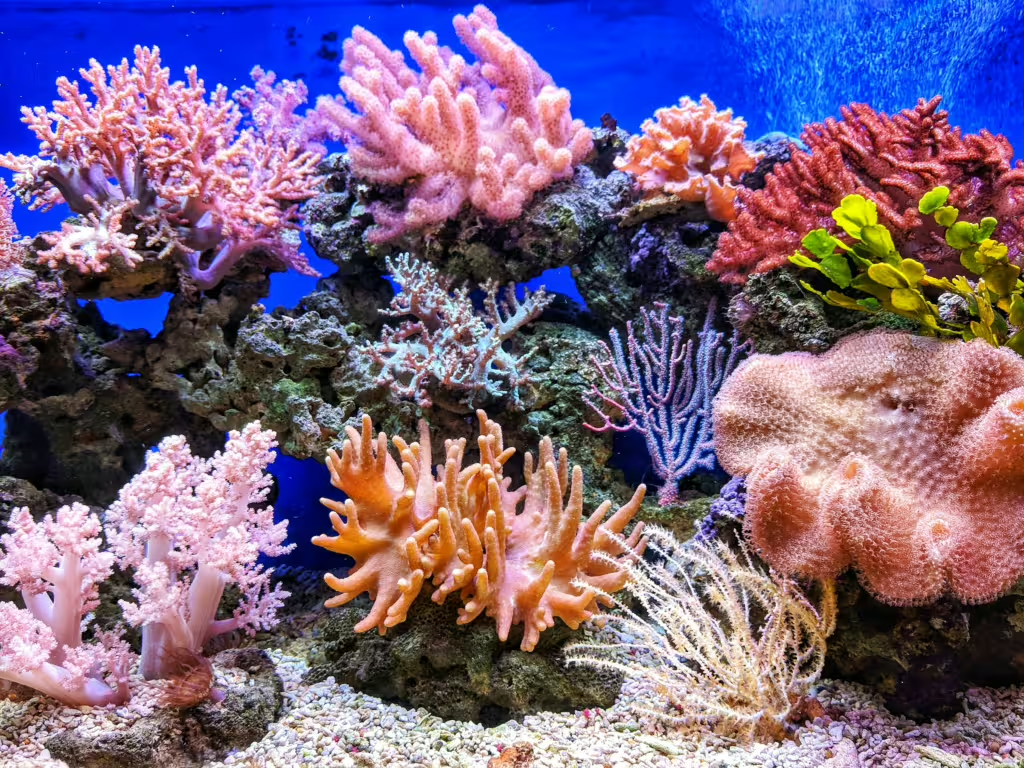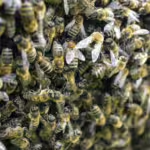Imagine, if you will, that you were sailing across the ocean on a long ship voyage. How immense and untamed the sea must have seemed in those days? The thing is, that sensation is probably not much different from what we experience when we look at the ocean today. After all, the sea has not shrunk in any capacity since the Age of Exploration. If anything, climate change has actually increased its size to a significant degree. And beneath the endless vastness of the world’s oceans, dwells a multitude of living creatures; some of them living in massive conglomerations of individuals.
Despite the changes wrought by pollution, climate change, and overfishing, the vast majority of the ocean still teems with life in astonishing abundance. Beneath the waves, where darkness, pressure, and the struggle for survival are constant bedfellows, a species’ continued existence can often hinge on the power of the group. Thus, across the world’s oceans, across eons of evolution, countless marine species have found ways to socially adapt, living in massive congregations that rely on each other for protection, feeding, migration, and reproduction.
In this article, we will discuss the collective behaviors of these marine species. We will examine how their social grouping has allowed them to shape the dynamics of underwater ecosystems. Some come along with us as we dive into the undersea world once more.
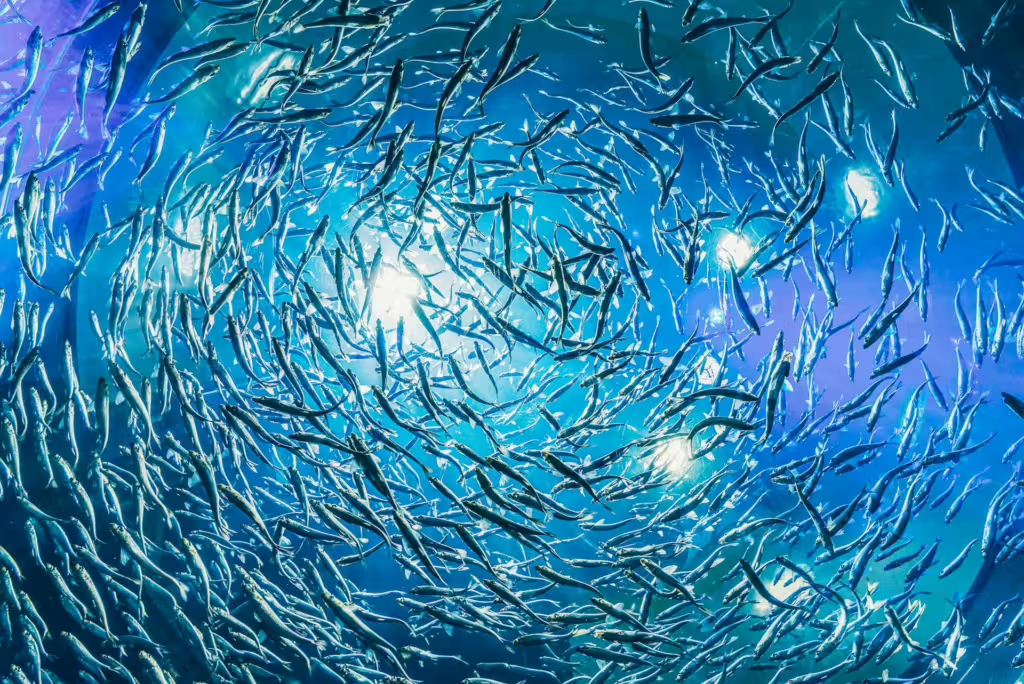
Why Live in Groups?
The uninitiated might not understand the reasoning behind why marine animals choose to live in groups, but longtime readers and nature enthusiasts will already know that living in groups offers numerous advantages for animals; marine or otherwise. As our species learned in the first days of human society, there is always safety in numbers. Not only can densely-grouped individuals confuse predators, thereby diluting the risk of being eaten, it also increases the intrinsic vigilance of the grouping. This is often called the “selfish herd” theory and it is wildly effective beneath the water.
Animals that live in groups also benefit from more efficient foraging. For example, dolphins herd fish while manta rays cyclone-feeds; both in groups. This increases the odds of everyone getting food. Mass gatherings of animals also increase the likelihood of each individual finding a mate. For those that gather but do not mate in a traditional sense, it also provides better odds that their eggs will be externally fertilized.
Sardines: A Silvery, Living Tornado
Most of us know about sardines only from the fact that they come whole and in tin cans. Our collective experience with them is somewhat divided, however. There are those who love the taste or laud their nutritional value and there are others who see sardines as little more than bait. Like them or love them, there is no denying that the annual sardine run that takes place off the coast of southern Africa is a sight to behold. Indeed, few marine spectacles are as famous—or more frenetic—than seeing billions of sardines migrate in a tightly packed, silvery current. This massive migration stretches across the water for miles and is a remarkable defense mechanism; for some sardines, anyway.
Typically, sardines live in schools because it ensures the species’ best chance for survival…but even that does not guarantee the safety or survival of each, individual sardine. By swimming in synchrony, the shoals of sardines are able to confuse predators like dolphins, sharks, and seabirds. The constant movement and shimmering effect of thousands of fish make it difficult, though not impossible, for predators to target any individual fish. And while they do get some, the vast majority of the swirling sardines are safe.
The reason that the sardines begin the run in the first place is because they are triggered by temperature changes and ocean currents. Between May and July of each year, the sardines travel north in tightly packed “bait balls” that attract an incredible array of predators in their wake. Dolphins and other clever critters have even been known to herd the sardines into tighter clusters. Meanwhile, voracious sharks slash through the masses in a wild attempt to fill their bellies with as many little fish as they can. Above it all, gannets and other seabirds dive-bomb into the water in a coordinated feeding frenzy. This predator’s buffet is a prime example of how mass behavior in certain marine species can affect or even maintain an entire food web.
Spinner Dolphins: Acrobatic Families
Most people already know that dolphins live and travel in family groups called pods. Spinner dolphins, so-named for their penchant for leaping from the water and spinning in mid-air, live in pods that can range from a dozen to upwards of hundreds of dolphins. And you thought your family was big!
Dolphins are intelligent, social creatures, so living in pods not only protects the whole group, but enriches social ties and familial bonding. Spinner dolphins live in tightly knit pods and thanks to their impressive vocalization skills, members are constantly in communication with one another. They do this through an array of clicks, whistles, and even body language. This type of communication helps them to protect their young, evade predators, and coordinate hunting and migration patterns.
Living as they do in warm, tropical waters, it is not uncommon for spinner pods to rest in sheltered bays during the hot, daylight hours. At night, they head out en masse to hunt squid and small fish in the open ocean.
Manta Rays: Graceful Giants
Manta rays might seem as though they are lonesome wanderers, floating like massive undersea angels amidst the meandering waves, but it turns out they can actually be pretty social; at least some of the time. In certain places and during specific seasons, these normally solitary giants will gather together in large numbers. They do this to not only breed, as most would expect, but also to feed and clean themselves up. There are two main species—the reef manta and the larger oceanic manta— and both are known to form aggregations of dozens or even hundreds of individuals.
What do the mantas eat when they join up in these great gatherings? Why, plankton, of course. These shark relatives feed by filtering plankton through their wide, gaping mouths and one of the reasons they get together is to do just that. During seasonal plankton blooms, such as those in the Maldives or Ecuador, rays gather will gather so that they can feed cooperatively. They utilize a behavior known as “cyclone feeding” during this time, which involves them swimming in tight spirals, creating a vortex that draws in the poor, delicious plankton.
There is also some proof that mantas will travel to nearby coral reefs during this time in order to get groomed by small reef fish. These undersea beauty parlors can often become sites of repeated social interaction between the gathering rays.
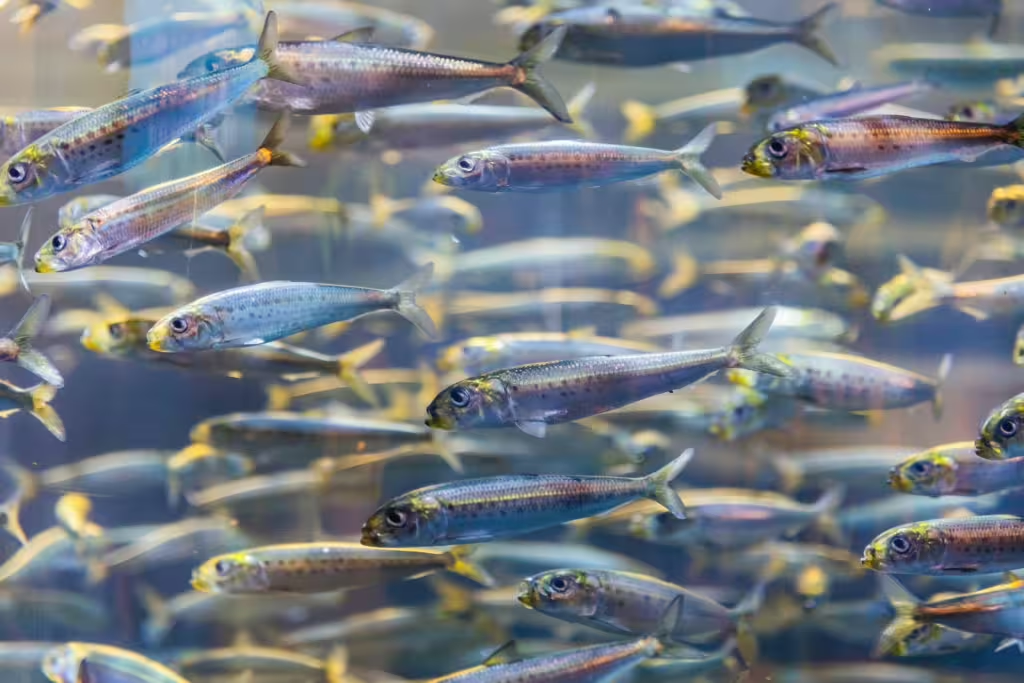
Krill: Foundation of the Food Web
Most of us only see them as clouds of wriggling dust swirling in the open ocean, but did you know that krill are actually tiny crustaceans? Most of them are typically no longer than a paperclip but when they get together—pretty much always— they form some of the largest gatherings of animals on the entire planet. Antarctic krill, in particular, gather in swarms so vast that they can be seen from space!
That’s right, krill swarms can be so massive that aliens can see them. They stretch for many, many miles, often containing more than 30,000 individuals per cubic foot. They live and travel this way for the same reasons that sardines do, to protect themselves from predators and keep each other safe,. In addition swarming also help the krill to more readily find plankton, their favorite food, and to conserve energy, which they do by practicing the age-old art of synchronized swimming. Like dolphins, they hunt at night, rising to the surface to feed on phytoplankton when the moon is full, and sinking down deep to avoid predators during the day.
Puny as they are, krill are actually a keystone species throughout much of the Southern Ocean. Indeed, without krill, many larger species would inevitably die off. Blue whales and penguins, in particular, would struggle to survive without this readily abundant food source.
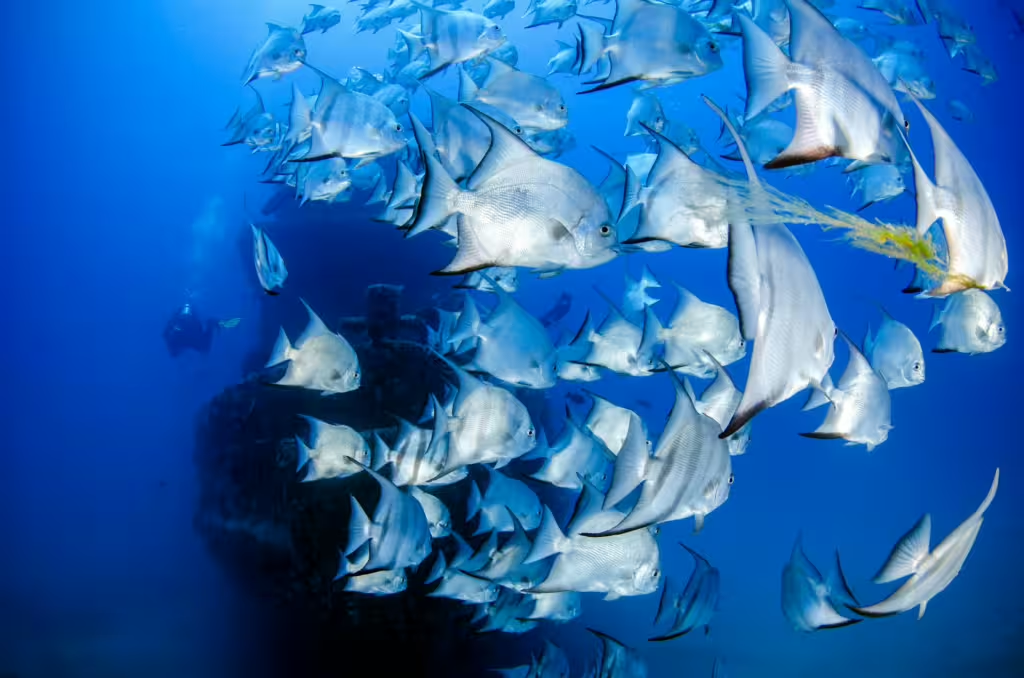
True Investigator Says…
From acrobatic dolphins to drifting coral polyps, the ocean is full of animals that have mastered the art of living—and thriving—together. Their group behaviors serve many purposes, from safety to feeding to environmental maintenance, revealing that life beneath the surface is anything but solitary.
These underwater gatherings are not only essential to marine ecosystems—they’re reminders that cooperation, in nature as in society, often leads to greater strength, resilience, and beauty.
Whether you’re watching a bait ball of sardines shimmer in the shallows or marveling at the quiet march of sea cucumbers on the seafloor, there’s no denying the power—and poetry—of collective life in the ocean’s depths.
Discover more from TrueInvestigator
Subscribe to get the latest posts sent to your email.
